#fixity of state
Explore tagged Tumblr posts
Text
youtube
Me literally every second of listening to this song

#doozic#little yellow box#who??#How???#fixity of state#one of the greatest songs ever written tbh#the opening seconds and final climax are transcendental#Youtube
0 notes
Text
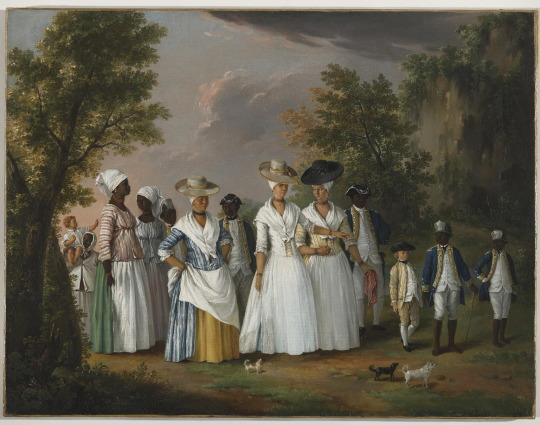
Agostino Brunias, Free Women of Color with Their Children and Servants in a Landscape, ca. 1770-1796, Oil on canvas, 50.8 x 66.4 cm (20 x 26 in), Brooklyn Museum, New York, United States.
“Brunias’s commissioned picturesque images of Caribbean life under colonialism obscured the violence of empire and slavery. In this example, Brunias depicts free and enslaved people who lived in Dominica under Britain’s colonial rule. Their skin tones and dress represent “types” of people, alluding to the island’s social, racial, and economic hierarchies that defined relations between white Europeans and people of African, Afro-Creole, Carib, or mixed-race descent.
Brunias’s paintings coincide with the historical moment when skin color and other visual and sartorial markers were becoming signifiers of human differences. Even as these images were created to affirm 18th-century British racial and social boundaries in the colonies, they reveal the contradiction and instability of those ideas. The artist’s undermining of the very concept of racial fixity, and visualization of race as fluid and socially constructed, may make this painting particularly resonant with its viewers in Brooklyn, one of the most culturally and racially diverse places in the world.”
Source: “Free Women of Color with Their Children and Servants in a Landscape.” The Brooklyn Museum.
#art history#history#artwork#neoclassical#neoclassicism#agostino brunias#18th century#oil on canvas#oil painting
32 notes
·
View notes
Text
Forest dieback means a decline in chronodiversity. This concept relates to biodiversity, or the variety of life on Earth, crudely measured as the number of species, or “species richness.” Conservation biologists make a precautionary assertion about that enumeration. They argue that safeguarding the maximum possible amount of genetic information created over millions of years of evolutionary history is wise and moral. The complement of species richness is temporal richness. The biosphere has further possibilities if it contains species of various evolutionary ages, species of various life strategies and life spans, and specimens of various ages within species. It is an ecological loss of doubled magnitude when a species-rich, age-rich rain forest becomes row upon row of monocultural, monochronic crops. Over the past two centuries, states and corporations—often working against local users and Indigenous activists—have divided the forested areas of the globe into binary zones: large industrial plantations of “ordinary” young trees and small inviolate preserves of “extraordinary” old trees. Before the awareness of anthropogenic climate change, preservation through segregation had its own logic—the logic of permanence. National groves were supposed to last forever. Now, in a time of fateful dynamism, these outdoor museums of olden trees may be doomed by their fixity.
98 notes
·
View notes
Text
Mangroves. Estuaries. Shorelines where land meets water. Fluidity and porousness of boundaries. Imposition of imperial, colonial, European property law and the “fiction” of solid borders. Profit extraction from property, the “legal magic” of creating permanent borders, and the destruction of coastal forest-worlds.
---
[T]his tropical coastal ecology is a site of continual refiguration: neither sea nor land, neither river nor sea, bearing neither salty nor fresh water [...]. The mangrove has been prone to confused definitions, [...] also a complex coastal ecosystem in itself. With these hybrid conditions of “belonging,” the mangrove lends itself to helping us think through the present-day schematic of Euro-American crises [...]. Its polymorphous personality as a sediment-carrier, land-builder, defender of numerous life forms [...] renders the mangrove a fascinating study in the biopolitics of selfhood. [...] The Sundarbans covers an area of 10,000 square kilometers of intertidal zones between parts of southwestern Bangladesh and the state of West Bengal in India. The largest mangrove forest in the world [...]. As a landscape, the Sundarbans is marked by unfixity, since its intertidal nature places it between appearance and disappearance -- with islands being submerged overnight. [...] [T]heir porous quality does not allow for clear border-making. In reading [...] satellite image[ry] of the Sundarbans, produced by what is said to be “the most stable, best characterized Earth observation instrument ever placed in orbit,” we are met with the trembling instability of borders. [...] [H]ere the coastline becomes indiscernible as a single entity. The legal vexations of such amphibious and obtuse terrain become pronounced in sea-rights cases, wherein border-making becomes the necessity of tenure. Forming rulings over such zones lays legality prone to paradox. In the Blue Mud Bay case, heard by the High Court of Australia in 2008, a legal body was called upon to make a determination regarding the shifting geography of a mangrove coastal region. In the final ruling the aboriginal Yolgnu claimants were successful, with the court ruling that the column of tidal water lying above land should be regarded no differently from the land itself. Thus the court’s attempt to encompass Dholupuyngu cosmology and “aqueography” occasioned a legal magic transforming water flow into the fixity of “land.” [...] The mangrove line is, hence, one of sedimentary reclamation rather than clear political divisions of terra firma. In mangrove zones, human determinations become ghosts.
Text by: Natasha Ginwala and Vivian Ziherl. “Sensing Grounds: Mangroves, Unauthentic Belonging, Extra-Territoriality.” e-flux Journal Issue #45. May 2013.
---
Traveling through Bengal in the eighteenth century, [...] [travelers] saw a highly sophisticated water-based economy -- the blessing of rivers [...]. The rivers were not just channels of water; they carried a thriving trade, transporting people and goods from one part of the delta to another. [...] Bengal’s essential character as a fluid landscape was changed during the colonial times through legal interventions that were aimed at stabilizing lands and waters, at creating permanent boundaries between them, and at privileging land over water, in a land of shifting river courses, inundated irrigation, and river-based life. Such a separation of land and water was made possible not just by physical constructions but first and foremost by engineering a legal framework. [...] BADA, which stands for the Bengal Alluvion and Diluvion Act, a law passed by the colonial British rulers in 1825 [...]. Nature here represents a borderless world, or at best one in which borders are not fixed lines on the ground demarcating a territory, but are negotiated spaces or zones. Such “liminal spaces” comprise “not [only] lines of separation but zones of interaction…transformation, transgression, and possibility” [...]. Current boundaries of land and water are as much products of history as nature and the colonial rule of Bengal played a key role in changing the ideas and valuations of both. [...] [R]ivers do not always flow along a certain route [...]. The laws that the colonial British brought to Bengal, however, were founded upon the thinking of land as being fixed in place. [...] To entrench the system, the Permanent Settlement of 1793 created zamindars (or landlords) “in perpetuity” -- meaning for good. The system was aimed at reducing the complexities of revenue collection due to erratically shifting lands and unpredictable harvests in a monsoon-dependent area [...]. From a riverine community, within a hundred years, Bengal was transformed into a land-based community.
Text by: Kuntala Lahiri-Dutt. “Commodified Land, Dangerous Water: Colonial Perceptions of Riverine Bengal.” RCC Perspectives, no. 3, 17-22. 2014.
---
[A]t the shore, where the boundary between land and water is so often muddied [...] terrestrial principles of Western private property regimes feel like fictions [...]. Shorelines, indeed, do much to trouble the neat boundaries, borders […] of the colonial imaginary […]. And so thinking about shallows necessitates attention to the multiplicity of water, and the ways that tides, rivers, storm clouds, tide pools, and aquifers converse with the ocean [...]. For Kanaka Maoli, the muliwai, or estuary, best theorizes shoreline dynamics: It is not only where land and water mix, but also where different kinds of waters mix. Sea and river water mingle together to produce the brackish conditions that tenderly support certain plant and aquatic lives. [...] As Philipp Schorch and Noelle M.K.Y. Kahanu explain, the muliwai ebbs and flows with the tide, changing shape and form daily and seasonally. In metaphorical terms, the muliwai is a location and state of dissonance [...], but it is not “a space in between,” rather, it is its own space, a territory unique in each circumstance, depending the size and strength or a recent hard rain. […] [T]he muliwai [...] as a conditional state [...] undoes territorial logics. [...] It is not a space of exception. Rather, it is where we are reminded that places are never fixed or pure or static. Chamorro poet Craig Santos Perez reminds us in his critique of US territorialism that “territorialities are shifting currents, not irreducible elements.” If fixity and containment limit, by design, how futures might be imagined beyond property, then the muliwai envisions decolonial spaces as ones of tenderness, care, and interdependence. [...] Because water has the potential to trouble the boundaries of humanness, it may furthermore push us to think through […] categorical differences […], to consider the colonial mechanisms that produced hierarchies of bodies to begin with [...].
Text by: Hi’ilei Julia Hobart. “On Oceanic Fugitivity.” Ways of Water series, Items, Social Science Research Council. Published online 29 September 2020.
#abolition#ecology#landscape#imperial#colonial#tidalectics#caribbean#archipelagic thinking#wetlands#mangroves#estuaries shoals swamps deltas etc#indigenous#ecologies#geographic imaginaries#carceral geography
169 notes
·
View notes
Text
Saw someone post about Jean Baudrillard's notion of irreversibility, which they presented as the idea that social reality is constituted through a symbolic exchange that is always both asymmetrical and reversible. I thought about this with relation to The Dawn of Everything, the way Graeber and Wengrow position autonomy, play, and thereby a sort of "reversibility" or non-fixity of social arrangements, as the general stature of human social life before the age of world empires and ultimately capitalism. "Less" that humans were "equal" in the sense that Rousseau and his descendants imagined and more that humans, at least if they weren't slaves, may have had a relative freedom to enter and exit different relationships, even ancient states, in a way that you kind of can't now.
Graeber said "The ultimate hidden truth of the world is that it is something that we make, and could just as easily make differently", and that's sort of hidden in the sense that it is also the ultimate fact of both the present and the most horrifically distant past. Captialism, viewed in this light, can't be seen the way some versions of Marxism do (and, by extension, the way Land or Landians have) where capital's dissolving of the pre-existing relations is supposed to have dissolved the fixity of values in some Lovecratfian Bauerism. Instead capitalism has dissolved previous fixed social arrangements only to then establish a new, more insidious, more intricate fixity of forms, values, and relationships. It may indeed be the culmination of "irreversibility", in the sense of social fixity. But of course even this fixity does not hold. Either we destroy it, or it erodes or collapses. But it will not exist forever.
2 notes
·
View notes
Text
Titus Andronicus: Simon Russell Beale is superb in this beautiful, blood-soaked nightmare
The great stage actor brings poignancy and lyricism to a brutally powerful production of Shakespeare’s most visceral play
Any time Simon Russell Beale tackles Shakespeare – his forte – it qualifies as a major event. But marvelling at his superlative Titus Andronicus, which brings him back to his alma mater, the RSC, I also can’t help observing how his choice of roles itself has a zeitgeisty feel for major events. He played Timon of Athens amid the financial crisis, King Lear in the run-up to the EU referendum, and Prospero in The Tempest when it felt as if his valorised type of actor was entering a valedictory phase.
With Titus, the Bard’s most visceral play, Max Webster’s revival lands in the Swan at a time when violence, reported and graphically relayed, is part of our quotidian reality. Of course, brutality is a human constant, but it’s pressing in on us now from all sides. Furthermore, in the spectacle of a loyal Roman general suffering the dismemberment of his comfort and hope, as a result of tyrannical authority, the work speaks, as if with urgency, to the current mood of rupture between citizen and state.
At 64, Beale is now a generation older than Brian Cox was when he gave a career-best, Olivier-winning account of the role for the RSC in 1988. While there’s an attendant drop in martial machismo (not that this was ever Beale’s calling-card), his elder-statesman air lends him a frail dignity that will be remorselessly shredded.
Entering stooped in a grey overcoat, his Titus is the model of fixity, as if weighed by the cost of his campaigns (drenched in his sons’ blood). His eyes widen in discreet disbelief when Joshua James’s capricious emperor Saturninus seizes on his daughter Lavinia for himself and there’s plain distress when this sick monster orders the release and elevation of those he has captured: chief among them Tamora, queen of the Goths (Wendy Kweh). The performance thereafter beautifully charts Titus’ journey from self-containment to man wildly undone, to the point of madness – emerging as the masterchef of one’s nightmares, in that notorious grisly banquet where he serves Tamora her pie-baked sons.
The blood-letting can risk becoming a distracting circus in its own right. Webster – who orchestrates animalistic scampering movement, stylised horror and ritualised action – doesn’t stint on sensation. With machinery deployed on automated overhead tracks, as if at an abattoir, here be men strung from hooks, a hand severed by a chainsaw, gore jetting all over the place and Letty Thomas’s ravished Lavinia left tongue-less and hand-bereft. Oddly, it’s the spurts of poetry, as if in redemptive answer to the inhumanity, that stay with you.
As much as he catches the dark incidental comedy of Titus’s numb stoicism, it’s Beale’s handling of the lyricism that brings a perverse smile of pleasure to the lips. And the verse-speaking is largely tremendous across the board, with Emma Fielding akin to an appalled witness as his sister Marcia (a neat gender-flip) and Natey Jones ferocious as the murderous Aaron, Tamora’s lover, (who enlists our sympathy because he is so damned for the colour of his skin). Much to chew on, and heaps to applaud, but not for the easily queasy.
6 notes
·
View notes
Text
"We are unique emanations of the same shared Light."

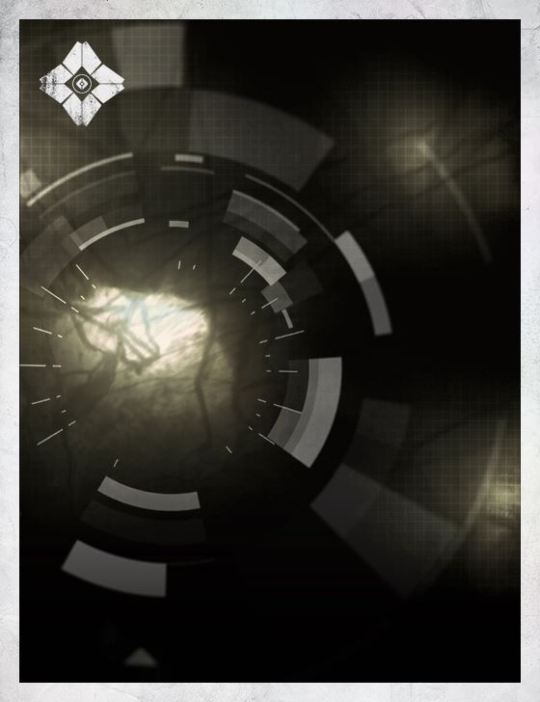
Collective unconscious refers to the unconscious mind and shared mental concepts. It is generally associated with idealism and was coined by Carl Jung. According to Jung, the human collective unconscious is populated by instincts, as well as by archetypes: ancient primal symbols such as
The Great Mother




The Shadow

"Shadows were cast here. History made.”
“Am I to cast a Shadow?”
“Yes. You were bred to be a sorrow-bearer. I seek a Hive commander, but those are not so readily available. So I made you.”

"The shadows, showing the truth by their casting."

The Tower




Water
"...wellsprings and rivers..."



The Tree of Life




Jung considered the collective unconscious to underpin and surround the unconscious mind, distinguishing it from the personal unconscious of Freudian psychoanalysis. He believed that the concept of the collective unconscious helps to explain why similar themes occur in mythologies around the world.
O: [sighs] I do not fully understand what I saw, and for a Human to understand a Hive mind... How many legends of katabasis do we have, Ikora?
I: We currently have dozens of stories about descending to the realms of the dead, though research has indicated many more must have existed, lost in the layers of Human history we will never lay eyes on. Mathematically, there were likely hundreds.
I: [pauses] Inanna and Dumuzid and Geshtinanna, Orpheus and Eurydice, Izanagi and Izanami, to name a few. Gods and goddesses, mortal and immortal lovers, always seeking to descend and return with the lost.
O: And neither the lost nor those who searched for them were ever returned the same.
He argued that the collective unconscious had a profound influence on the lives of individuals, who lived out its symbols and clothed them in meaning through their experiences.




"They evidently live and function in the deeper layers of the unconscious, especially in that phylogenetic substratum which I have called the collective unconscious. This localization explains a good deal of their strangeness: they bring into our ephemeral consciousness an unknown psychic life belonging to a remote past. It is the mind of our unknown ancestors, their way of thinking and feeling, their way of experiencing life and the world, gods, and men. The existence of these archaic strata is presumably the source of man's belief in reincarnations and in memories of 'previous experiences'. Just as the human body is a museum, so to speak, of its phylogenetic history, so too is the psyche."
Ego | Shadow
Sacred Progenitor | Tyrannical Progenitor
Old Wise Man | Trickster
Animus | Anima
Meaning | Absurdity
Centrality | Diffusion
Order | Chaos
Opposition | Conjunction
Time | Eternity
Sacred | Profane
Transformation | Fixity
Light | Darkness
"And the essential thing, psychologically, is that in dreams, fantasies, and other exceptional states of mind the most far-fetched mythological motifs and symbols can appear autochthonously at any time, often, apparently, as the result of particular influences, traditions, and excitations working on the individual, but more often without any sign of them. These "primordial images" or "archetypes," as I have called them, belong to the basic stock of the unconscious psyche and cannot be explained as personal acquisitions. Together they make up that psychic stratum which has been called the collective unconscious. The existence of the collective unconscious means that individual consciousness is anything but a tabula rasa and is not immune to predetermining influences. On the contrary, it is in the highest degree influenced by inherited presuppositions, quite apart from the unavoidable influences exerted upon it by the environment. The collective unconscious comprises in itself the psychic life of our ancestors right back to the earliest beginnings. It is the matrix of all conscious psychic occurrences, and hence it exerts an influence that compromises the freedom of consciousness in the highest degree, since it is continually striving to lead all conscious processes back into the old paths."
Every weapon wielded and scrap of armor worn, every place visited, person met, symbol seen and pondered, every thought formed and lost and formed again... each one has a place in this story. Haven't you ever wondered what it all means? Where the path leads? Many have followed it before, countless numbers. And soon, it will be your turn. To walk. To see.

To understand.
A dream of a metaphor made starkly, an allegory discussed in study of ontology, in Darkness not unkind. It leaves behind a warped, barely-real data fragment to mark its passing. There is a voice that echoes across the Darkness, and it asks this question: what is the purpose of it all? And there is another voice that calls back and says: listen, I will tell you a purpose. I will tell you of a Final Shape. Look: there are a hundred gildings for this story. It comes down to one key matter. Beings in suffering crave purpose to carry them through. The tyrant consumed by ennui or the disenfranchised struggling simply to survive—it is the state of mind, the pain which cries out: give me a reason I should suffer so! Let us speak of power and choices. A man comes to a crossroads and asks of the sky, "Which road shall I take?" There is no answer from the sky, nor the wind, nor the earth beneath his feet. But another wanderer on the road, coming from behind and hearing the question, says, "I know the way. You should take the dexter road." If the man agrees, he puts himself in the wanderer's power, ceding his own choices for the implicit promise that this is the correct road, the safe road. And if he disagrees? Let us say that the wanderer draws a knife. The man may therefore be made to take the dexter road. But now if the knife goes away, the man will certainly flee. And perhaps even if the knife remains, the man may tire of being threatened and decide the risk is worth fleeing. In this way, the wanderer erodes their own power. If the wanderer says, "The wind has said that you should take the road of my choosing," will the man accept the choice made for him? And if the wanderer says, "Behold, I have seen that the meaning of suffering lies along the dexter road," will the man give away his own power for longer? Is it not easier to accept the guidance of a stranger when the path ahead is unknown?
youtube
And day dissolves into gold Night beckons and calls Night turns white with grief I can’t sleep
Whispers of the past Memories of yesteryears The things that did not last I recollect the tears
My love hold me tight There’s a haunted moon tonight Withered flowers never lie In midnight hours and numb goodbyes
Whispers of the past Memories of yesteryears The things they did not last I recollect the tears
Whispers of the past Memories of yesteryears The things they did not last I recollect the tears, the tears
#trace the vermicular path#the final shape#destiny 2#destiny#destiny the game#destiny lore#d2#destiny2#destinythegame#the veil#destiny the witness#Youtube
12 notes
·
View notes
Text


“According to the etymology of the word, anarchy would mean absence of all government, of all political authority. *** Anarchy is nothing but self-government carried to its extremist limits, and the last step in the progress of human reason. *** Politics, as hitherto understood, would have no further raison d’être, and An-archy, that is to say, the disappearance of all political authority, would be the result of this transformation of human society in which all questions to be solved would have a purely economic character. Long ago J. B. Say advanced the opinion that the functions of the state should be reduced to the performance of police duties.{1} If so reduced there would be but one step needed to reach the An-archy of M. Proudhon – suppression of the police power.” – Lalor’s Cyclopædia of Political Science
I have repeatedly been asked to write a brief summary of the aims sought by Anarchists which could be read and discussed in the various clubs that are studying economic questions. With this end in view the following pages are submitted, trusting that they may be a help to those who are earnestly seeking the rationale of the Labor Question.
D. D. L.
I. Introduction
All sociologists claim that progress has consisted in departure from compulsory to voluntary co-operation; from the reign of militant measures to what is termed the industrial type, wherein self-reliance and free co-operation directs; from the inequalities of privileged and restricted classes to the equality of equal freedom to natural opportunities; in short, to use the concise statement of Herbert Spencer, “from a regime of status to a regime of contract.” In the social order militancy and industrialism, therefore, represent past and future types; the first wherein war is the normal direction of human activity; the other where peace must prevail for healthful development. Following this guiding principle let us endeavor to group the salient points of progress from militant rule to industrial requirements in order to see more clearly not only in what direction we are tending, but also what methods are not conducive to that end. Starting with the fact that social evolution is chiefly characterized by a transition from warlike to peaceful pursuits, that from generation to generation activity has been turning from conquest over fellowmen to conquest over nature for men, we see at once that methods characterizing an outgrown phase of life are inappropriate to the end toward which progress has been made.
Before, however, applying to all schemes for reform the crucial test: Do they belong to the militant or industrial type? let us obtain a clearer view of their differences. The one being fixity, the other its abrogation, between the two there can be no golden mean without sacrifice of progress, for compromise in principles is ever incipient suicide. With a clear conception of the historical evolution of society we may be spared the folly everywhere attempted by would-be reformers of mixing incongruous principles; such may be compared with those who would seek a happy medium between daylight and darkness in twilight. Having attained this, to the great delight of sentimental lovers and fledgling poets, they flatter themselves in having solved the eternal contradiction in a state of possessing none of the positive nor negative qualities of either, and which, consequently, can be but temporary in duration.
To state in briefest form the essential distinction between militancy and industrialism, it may be said that the one is a scheme of compulsory co-operation, the other the natural outgrowth of voluntary co-operation. If we look at those States where the militant spirit dominates most largely we find the organization essential to an army extended to the concerns of private life. The whole nation virtually becomes a camp under military discipline; industrial life is subordinated to regulation; the individual exists for the State and a regimental uniformity pervades all social relations. The individual is a subject and with his condition, his residence, his family, enregistered. Of ancient Peru we read that officers “minutely inspected the houses, to see that the man, as well as hi wife, kept the household in perfect order, and preserved a due state of discipline among their children.” {2} Ancient Egypt furnishes ample evidence of a like regimentation of its inhabitants, who had to report at fixed intervals to account for the most trivial action. How fully the every-day life of the Hebrews was regulated in the most petty manner the pentateuch illustrates. The iron laws of Sparta are not exceptional illustrations. In every State where activities are chiefly military, even now, we see a greater or lesser degree of enforced discipline; patriotism becomes the highest virtue and disloyalty the deepest crime; no domestic tie is valid against the Frankenstein of the State; the assertion of common rights is hardly known. The State dominates the unit, pervades the household, is present at birth, presides at marriages, buries the dead, and the mass of the population endure life for work, instead of working to enjoy life. In every sphere of social co-operation the motive power is compulsion, not naturally evolved, but artificially instituted. Herbert Spencer says, and it cannot be disputed: “It is the law of all organization that as it becomes complete it becomes rigid,” {3} a remark of profound significance which is earnestly commended to the thoughtful attention of Socialist and semi-Socialist reformers who would institute liberty and still preserve plasticity!
Let us beware the militant assumption that man exists for the State, and trust to theoretical brakes to check the momentum of a body moving with increasing velocity. The social aggregate is not something over and above the units which constitute it. When these units are moral, are intelligent, are secure, only then is social life moral, intelligent and secure. The condition of the units is mirrored in the social reflector. To subordinate the parts to the whole is to destroy that individuality by which the social unity has been attained; to place in the whole that which resides in none of its parts; to make an effect a generative cause and bestow upon a shadow the qualities of a substance. An illustration will make this clearer. College classes frequently have composite photographs taken in which the features of each is superimposed upon the others. The result is a face representing the striking characteristics of all, but in which angularities of character are merged into one. Though the class face represents no living original, yet each has contributed to form it. So in social life individual; peculiarities are merged into the composite social life, and the survival of the fittest determines what remains or sinks. In the class face the stronger the individuality the greater the effect upon the composite whole. As social life is but a composite representation of individual characteristics, how idle to hold that the unit is subordinate to the requirements of the composite reflection in which self has been an integral factor. Yet this is the logic of state-socialism and communism, for both rely upon direction from composite reflection, and directly violate the law of progress in seeking to establish a social structure upon uniformity rather than individuality, upon tendency to similarity rather than increasing variance of parts.
The whole course of modern history has been a perpetual struggle against direction in social relations. Motley calls the Fourteenth century an “Age of Revolt.” {4} Europe everywhere displayed social life under paternal guidance. The very clothes that a man must wear, hours of work and of repose, the time for which a mechanic should be retained, the number of sheep a tenant might keep, limitations upon travel, restrictions upon diet, the hierarchy of ranks, rules regulating social intercourse, the very thoughts one must think, – were all matters for legislative direction in Merrie England. In philosophy, religion, politics and industry law established the standard for belief and action. The crusades by changing vast bodies of men from the narrow boundaries which had heretofore confined their vision, by opening to them new scenes and civilizations, by emancipating multitudes of serfs, by introducing Eastern arts and luxuries; all of which may be summed up in Sismondi’s phrase: “the geography of the pilgrims;” {5} and above all by sowing broadcast the seeds of unbelief; – led to an awakening of intellect that shook the old foundations of social life to their center. Jack Cade and Wickliffe in England, the Artaveldes in Holland, Marcel and the jacquerie in France, the risings of the Swiss cantons, Rienzi at Rome, the Hanseatic League in Germany, {6} and countless sporadic insurrections against authority in philosophy, in religion, in political and economic relations, all testify to the opening of a new era wherein individual sovereignty was posited against collective control. Industry felt the new breath and became arrayed against oppression. The communal struggles in France and the alliance of the Hanse Towns in Germany illustrated the new spirit wherein arms were only resorted to for defence against aggression, a contest wherein feudalism was wounded unto death and its history henceforth but the record of its dying struggles. The renaissance in thought and art, the Protestant revolution in religion, the English, American, and French revolutions in State policies, logically led to the extension of the assertion of the sovereignty of the individual to economic relations, a struggle which essentially characterizes the Nineteenth century. Every step forward has been at the expense of authority by increasing the area of voluntary actions; voluntary co-operation has invariably risen to supply needs as compulsory co-operation was removed. Authority has been shorn of its strength in philosophy and religion and Anarchy therein admitted to be in the line of progress; in the State its sphere has been continually narrowed by the growth of freedom to contract to achieve given ends. Nor have we yet reached the term of progress whatever may be the wishes of militant reactionists or the schemes of twilight reformers. The lines of progress have been so marled that we cannot doubt the ultimate result will be the extinction of all compulsory direction and the triumph of voluntary co-operation in every phase of social intercourse.
The theological age is of the past and we are yet in what may be termed the metaphysical age, in which names are taken for things. {7} The industrial age has yet to come; we linger in the transition period in which old methods are laboriously hashed with the new and presented to twilight adorers as the Mecca of their hopes. Although we may already discern the dawn and hasten its progress by understanding the requirements of equal freedom, and hence equal rights, than which there are no other, it is still neither day nor night; happily however, a state of hazy twilight is unorganizable. The industrial type of social life, based on the law of equal freedom, demands the emancipation of the individual and establishes the desired synthetic harmony of individual and social forces by the removal of legislative interference. Out of this is naturally evolved free co-operation, for social interests being a permanent factor, it will be this seen to be best furthered; in other words, under individual freedom to contract self-interest will be seen to be identical with mutual interest. Only under equal freedom has individuality full scope, unchecked by restrictive interference and in joint concurrence of action where needed social and individual interests will be woven together in harmony, without the conflicts now incident upon their enforced separation. “Society” only then will become a social providence – not to dole out benefits to needs, and thus encourage mediocrity by weakening initiative, but to store the fruits of application, of co-operative effort; and in securing under equal opportunities to each the full reward of all deeds, find wherein to satisfy all needs. Then, and only then, will self-interest find its highest realization in the widely diffused benefits of morality, intelligence, and security.
The history of nations shows us that enforced “law and order” has prevailed largest where there existed similarity of interests. The irruption of the barbarians into Europe destroyed the unity that Rome had so laboriously established by causing diversity of aims between conquering and conquered peoples. Such countries as England and France attained partial equilibrium long before Spain with its mixture of Basque, Celtic, Gothic, Moorish and Jewish subjects, and in whom both religion and natural traits kept alive diversity, which while the result of militancy became the cause of its continuance to preserve the conquerors amid warring factions. Where interests were so diametrically opposite and each seeking vantage ground, where the strong hand could alone preserve the semblance of order by the subordination of all individual interests to those of the State, peace – the condition of industrial progress – could not obtain. Fusion by conquest could not obliterate distinctive characteristics founded in race. Might could silence, but not eradicate them. Discontent might not find expression, but the embers were kept smouldering beneath the ashes.
In the present form of society we find diversity, but of classes rather than of races. While we have no State-created class of priests nor nobles, while all men are theoretically declared “equal before the law,” we see unmistakeable evidence of radical diversity of interests leading to internecine strife, a diversity that manifests itself in countless ways provoking discord and struggle. This strife is no longer either religious or political in its nature; those issues are of the past, our records report no Praise-God-Barebones’ parliaments nor constitution-maker Sieyes’ conventions; {8} those issues were long since threshed. The contest of the present is industrial, and it behooves every thoughtful person to seek out the causes and ponder over the character of the remedies so freely advertised for its cure. Progress requires diversity, but order can never result save as adapted to, not checking, progress. “Progress and Order,” rather than “Law and Order,” is the demand of the industrial type of civilization. {9}
Reliance upon militant measures, trying to curb industrial discontent by legislative coercion, is reactionary in character. However disguised in twilight mixtures it is the spirit of the old regime seeking to dominate the new; as vain as seeking to check an exhaustless flow of water by damming the stream. The remedy cannot lie in enactments, in the organization of systems, in return to simplicity of structure, for industrial civilization demands plasticity of forms which “the law of equal freedom” alone gives, while organization, on the other hand, ever tends to rigidity. As in the physiological realm hybridity ever characterizes unlike organisms, so in sociology no successful progeny has ever resulted from compulsory intermingling of diverse classes; but where, as in sociology, the diverse classes are such because of chartered privileges, involving correlative restrictions, abolition can alone prove remedial. The sacerdotal and noble classes were destroyed as ruling classes, but to-day they stand behind the burgher class animating it with their inherited antagonism to plebeian interests. When Cæsar conquered Greece, he subjugated Olympus, and the gods now measure tape behind counters with Christian decorum. It is useless to seek to domesticate conquered classes for reproductive purposes; it is only in their extinction, the equalization of opportunities by which divers classes cease to exist, that relief can come. Privilege, though not symbolized by tiara and crown, still survives and is the soul of the prevailing economic system, a new incarnation of the ancient fetich. Hence the present contest.
Industrialism means the direction of human activities to conquest over nature, and only by the complete eradication of the militant theorem can the ideal ever become real. From compulsion, artificially induced, to voluntary co-operation, naturally evolved, the star of progress leads and no method of reform embodying any of the elements of the first will answer the end, for in so far as it does it contains the seeds which lead to fixity and choke plasticity. It is not by looking backward to regimentation, but forward to free contract, that the goal will be seen. Whether it be a Bismarck granting State pensions to aged workmen, France and England extending collective control over industrial activities, twilight schemes for instituting liberty by shifting tax burdens, or an appeal to a count of noses by which political alchemy will transform diffused ignorance into concrete wisdom, it is ever putting new wine into old bottles, an attempt to retard day by organizing morning twilight as a permanent condition for ever-varying needs. Voluntary co-operation needs no “direction”; self-interest alone will determine its rise and adaptation, for where the social demand is the supply then must follow. No matter how “advanced” a project may be vauted to be, in so far as it incorporates militant direction, denies individual secession, forbids ignoring the State be it of what form it may, just so far is such project looking backward when tested by the law of progress, and consequently in disagreement with the requirements of the future. Free contract (once declared utopian in all relations) either is or is not the ideal of industrial civilization. If it is, there can be no permanent halting place between these antagonistic lines notwithstanding metaphysical doctors attempt it in Single Tax and Nationalism. Statecraft may dictate the straddling policy of Ensign Stebbins {10} who announced that he was “in favor of prohibition, but agin’ its enforcement”; or priestcraft direct attention from present ills by preaching resignation coupled with post obit drafts {11} on the Bank of New Jerusalem; but the social student should ever keep his gaze on the ideal end and with voice and pen only advocate such measures as will not only tend thitherward, bit which will remove rather than preserve obstructions. Neither in plethoric nor emasculated tariffs, prohibition, inspection of factories, mines, ships, houses, bakeries, and markets; not in compulsory education nor vaccination, use of ballot prayer-mills, etc., lies the remedy. These, and countless others are but makeshifts to reconcile the new with the old, twilight propositions of those whose eyes do not perceive the beauties daylight alone can fully reveal. They are based on the retained superstition that State authority has no assignable limit, and demanding for it blind faith; it is a survival of past forms of thought, a diluted phase but lineal descendant of the old dogma that “the king can do no wrong”, and involving the fiction of “divine right” in the maxim: “vox populi, vox dei” {12} spread out to cover half the whole plus one! Power no more resides in a definite number than in one, and all alleged “reforms” based upon this superstition derive their weapons from the armories of militancy, from the Bismarckian right wing down to the collectivist left wing of Tax-shifters and Nationalists.
#economics#history#industry#labor#money#sociology#work#anarchism#anarchy#anarchist society#practical anarchy#practical anarchism#resistance#autonomy#revolution#communism#anti capitalist#anti capitalism#late stage capitalism#daily posts#libraries#leftism#social issues#anarchy works#anarchist library#survival#freedom#Dyer D. Lum
2 notes
·
View notes
Text
Conventionally, escape, when used of "escape literature," implies a general evasion of responsibilities on the part of the reader who should, after all, spend his time on "serious literature." This is a pernicious dichotomy that derives from two misconceptions: first, that "seriousness" is better than "escape"; second, that escape is an indiscriminate rejection of order. Both these misconceptions owe something to the Protestant work ethic.
Escape literature includes adventure stories, detective stories, tales of fantasy, pornography, westerns, science fiction, and, when read for pleasure by adults, fairy tales.
Escape literature, according to the conventional wisdom, "aims at no higher purpose than amusement." But in the notions of "higher purpose" and of adults reading in a genre "beneath" them, we see that even today we maintain vestiges of the old prescriptive criticism: some kinds of literature are inherently better than other kinds. However, whatever virtues this position may have, it does not help us address questions of the uses of the fantastic.
The escape offered by these popular genres comes from their ability to exchange the confining ground rules of the extra-textual world not for chaos but for a diametrically opposed set of ground rules that define fantastic worlds. In so doing, authors create for us such works as The Odyssey, Oedipus, and Metamorphoses, to name just one each of "adventure stories, detective stories, tales of fantasy." These are not "beneath" anyone, and their escape is just as potent, and derives from precisely the same reconfiguration of ground rules, as To Hell and Back, And Then There Were None, and Pinocchio, respectively. The theme of a work may seem trivial, its characters uninteresting, its conflicts irrelevant, but if it offers escape, it is in that regard structurally akin to some of the world's great literature.
Escape in literature is a fantastic reversal, and therefore not a surrender to chaos. In its mundane uses, escape may be defined as "emerge from restraint; break loose from confinement." In the United States, the only country that calls its prisons penitentiaries, escape surely must imply a delinquent evasion of responsibilities. Since prison is an inherently displeasing environment with onerous ground rules, escape comes to mean any change, escape to anywhere. But escape from the prison of the mind is not so easily had. If the restraint is grounded in one's perceptions of oneself or of the nature of the world, mere change is not enough: one needs a compensating change, a diametric reversal. If boredom is the sign of the mind's one-track fixity, then its opposite, excitement, is what we need. Alice descends into Wonderland, not into Morris' Nowhere or Voltaire's garden. Escape, then, is neither inherently frivolous nor inherently unrestrained; we need feel no guilt in reading escape literature. In the literature of the fantastic, escape is the means of exploration of an unknown land, a land which is the underside of the mind of man.
—Eric S. Rabkin, The Fantastic in Literature, 1976
36 notes
·
View notes
Text
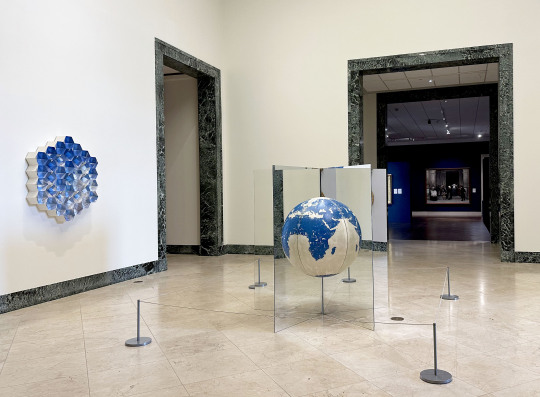


Brookhart Jonquil, “Groundless”, 2023, Mirrors, steel, acrylic paint, enamel paint
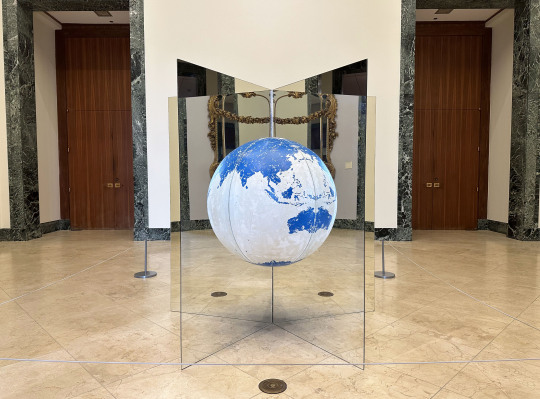
Brookhart Jonquil, “E)A)R)T)H)”, 2012, Mirrors, EPS, MDF, plaster, paint




Brookhart Jonquil, “Multiplication Portal”, 2022, Plexiglass, water, powdercoated steel, plant cuttings, marine polymer sheet, pump system
For The Nature of Art at the Museum of Fine Arts St. Petersburg, work from the exhibition is spread throughout different sections of the museum. In the Great Hall and Sculpture Garden are installations by Brookhart Jonquil.
From the museum about these works-
In this group of installations, Brookhart Jonquil creates art that engages physics, architecture, and ecology to explore the immaterial, shifting aspects of the natural world. His work reflects influences ranging from Minimalism to theories of utopia and perfection; it offers viewers new ways of seeing and a nuanced understanding of our place in the world. The works exhibited here and in the Sculpture Garden encompass over a decade of his career, illustrating how nature has always influenced his artistic practice.
Groundless is Jonquil’s most recent work, inspired by painting en plein air, the Impressionist practice of working outdoors. However, the artist has complicated this by incorporating mirrored surfaces that deny full control of his compositions. Jonquil notes, “Each stroke of paint multiplies unpredictably as I place it, while shifting colors and cloud-forms evade fixity.”
The floor-based sculpture E)A)R)T)H) uses five pieces of mirror glass to dissect an earthly sphere. Unlike Groundless, these mirrors reflect the Great Hall, foyer, and surrounding galleries, suggesting a macro-and micro-viewing of our planet. To further a sense of dislocation, Jonquil has inverted the colors typically associated with land and water: bodies of water are depicted in white, while land is blue.
Multiplication Portal-on view in the Sculpture Garden- is a participatory sculpture highlighting the care and responsibility involved in cultivating plants. Reminiscent of both a kaleidoscope and a beehive, it was inspired by chaos theory-also known as the butterfly effect, which is the idea that one tiny gesture can have colossal consequences within dynamic systems. Brookhart created Multiplication to fight environmental disillusionment. Can one individual impact the impending climate disaster? What is the point of separating paper and plastic? Does turning off the lights make a difference? Multiplication Portal serves as a reminder that our seemingly small actions have the potential for significant consequences.
In an upstairs gallery is the video installation, Blood, Sea by Janaina Tschäpe (seen below). The dreamy video takes you underwater to explore transformation through sea maiden myths.
Information on the installation from the museum-
Reminiscent of Voltaire's Micromégas, Janaina Tschäpe's fantastical scenes dissolve boundaries, seamlessly intertwining in an ever-flowing continuum of evolution and transformation in a grand opera that delves into themes of change, gender, and the construction of myth and history. The universe created by Tschäpe beckons one into a parallel world of ambiguous scale-indeterminate in both time and space. The spring-fed grotto provides the scenographic impetus for this grand production, a captivating fusion of a theme park nestled within a state park and bearing the distinction as one of Florida's oldest roadside attractions. The sea maiden mythologies that inform Blood, Sea link endless stories from across time and space, as many cultures have some version of a water goddess. Millennia of previously unknown deep-sea creatures caught in fishermen's nets spawned the mythic narratives that gave rise to these goddess/creature tales. From the Mami Wata spirits of West Africa to the water sprites of Irish lore, the trope of the sea maiden appears around the world and across time. Tschäpe's primary connection is her namesake, the Orixa lemanja of Candomblé. This powerful water spirit is the Brazilian version of the many syncretic gestures born of the Yoruban Afro-Atlantic diaspora. But lemanja is merely one character in the global pantheon of the water goddess.
The split-tail mermaid motifs that adorn the exterior walls of centuries-old homes in the landlocked Swiss Alps are a testament to the enduring allure of the fish woman's imagery. The split-tail represents the hybrid presence of both home and away, the perpetual dual identity of the émigré, and a curious cipher of Tschäpe's experience living between the culturally antipodean points of Germany and Brazil. This existence places her between logic and magic, between Protestant rationalism and the mystical worldview of Candomblé, between the grey angst of northern Romanticism and the sensual elegance of the southern hemisphere. This ever-changing identity is evidenced clearly in Blood, Sea, where the video's perspective perpetually shifts. At certain moments, the viewer finds themselves aboard a ship, assuming the role of a scientist discovering a previously unknown life form. In other instances, we have the privilege of swirling amidst the creatures, becoming one with them.




This exhibition closes on 4/14/24.
#Brookhart Jonquil#Art#Janaina Tschäpe#Museum of Fine Arts St. Petersburg#The Nature of Art#Art Installation#Art Shows#Earth#Environmental Art#Film#Florida Art Shows#Installation Art#Mermaid#Mixed Media Art#Myth#Painting#Sculpture#Sea Maiden#St. Pete Art Shows#Underwater Photography#Underwater Video#Video#Voltaire
5 notes
·
View notes
Text
I’m returning to an article I can remember reading and trying to seriously think through a few years ago—back around 2019. The article is Sandra Rosenthal’s “Continuity, Contingency, and Time: The Divergent Intuitions of Whitehead and Pragmatism,” published in the Transactions of the Charles S. Peirce Society in 1996. In the article, Rosenthal argued that there is “a fundamental chasm” separating what she calls “Whiteheadian and pragmatic process philosophies” (542). This separation derives from “different intuitions of the nature of time” that are then “inextricably intertwined with diverse perceptions of the nature and interrelation of continuity, discreteness, and contingency” (ibid.). This initial article actually incited a reply by Lewis Ford the next year, to which Rosenthal then wrote a reply of her own, and then Chris van Haeften wrote what was essentially a follow-up to those previous discussions in 2001. So from a certain perspective the whole thing was quite productive.
Reading through it now, though, I’m struck by just how poor the level of argument is—but then I’m also not especially surprised. Lately I’ve really been coming to the assessment that the scholarship on Whitehead is, in general, extremely poor. Maybe I’m being harsh, and in general you’re not bound to find that much legitimately good scholarship on any philosophy, especially more marginal philosophers from older time periods.
Rosenthal states, early on in the article, that “the philosophical search for the security of fixity, the fully definite, as well as the a-temporal, has survived surprisingly well in Whitehead's philosophy” (542-543). This is, in fact, true in a rather mundane and obvious way, so that Rosenthal has no warrant for appending “surprisingly” to her sentence. Whitehead always made it clear that his philosophy included both (1) entities that are fully definite and determinate (in many of the distinct ways we could importantly define either of those two terms) and (2) permanent entities, including even entities that are a-temporal (which, again, could apply given at least a couple distinct ways of defining a-temporality).
Whitehead does, after all, include something called “eternal objects” in his category of entities. Or, if we want to turn to one of his more poetic (and thus, on an initial read, more memorable) phrasings, take how, in Process and Reality, he cites these lines from a hymn:
Abide with me; Fast falls the eventide.
He then writes, “Here the first line expresses the permanences, ‘abide,’ ‘me’ and the ‘Being’ addressed; and the second line sets these permanences amid the inescapable flux. Here at length we find formulated the complete problem of metaphysics. Those philosophers who start with the first line have given us the metaphysics of ‘substance’; and those who start with the second line have developed the metaphysics of ‘flux.’ But, in truth, the two lines cannot be tom apart in this way” (209). Later in the book Whitehead will refer back to these lines, and state his point again: “Ideals fashion themselves round these two notions, permanence and flux. In the inescapable flux, there is something that abides; in the overwhelming permanence, there is an element that escapes into flux. Permanence can be snatched only out of flux; and the passing moment can find its adequate intensity only by its submission to permanence. Those who would disjoin the two elements can find no interpretation of patent facts” (338).
So Rosenthal is not wrong to state that Whitehead retains a place for “fixity, the fully definite, as well as the a-temporal”, no matter her moralizing over it—and it’s a common feature running through this paper that she uses moralizing terms like the “security” above while discussing what are really pretty mundane things. So Rosenthal is also correct in noting that actual occasions, upon coming into existence, “do not change, do not alter while maintaining an identity” (543). Thus there is, as she put it, “a fully fixed, unchanging past” (ibid.). She seems to want this to be somehow shocking to the reader. She later criticizes Whitehead’s philosophy for the way in which “potentiality and actuality are fundamentally isolated, for becoming actual is a process of achieving definiteness, and the moment of attaining full actuality and perishing is at once the attaining of absolute definiteness. There can be no residue of potentiality in the fully actual or it would not be fully actual, fully definite” (552). She characterizes this as actuality and potentiality being “strangely separated from each other” (ibid.). Her characterization again uses moral terminology—“isolated” and “separated”—in the process of characterizing what seems, rather, to be the mundane and common sense position, and perhaps even the semantically tautologous position. A process that may possibly occur many different ways will, when it occurs, occur in just one definite way: it will be actualized, and once it is actualized, there is no longer any potential for it to go any other way: it is now in the past. That's, semantically, the difference between saying it's merely possible but not actual, and saying it's actual. None of this seems, in itself, at all shocking. There surely could be metaphysical premises accepted for one reason or another that contradict this and thus motivate us to not agree with Whitehead, but those are not obvious and the position in itself is certainly not “strange.”
This problem of possibility and actuality is in general treated in a confusing manner by Rosenthal. Take, for example, this passage:
Because of this absolute fixity of the past, Whitehead's system requires eternal objects to account for novelty. For, if the past provided everything for the present, then nothing new could appear; the apparently new would be merely a configuration of the old. Since the past is fixed and final, novelty is possible only by the intervention of something eternal or a-temporal; the future exists as possible in the form of inert, fixed, objective real possibilities. The ingression of eternal objects into events is Whitehead's way of getting contingency from a fixed, fully determinate past that cannot itself adequately allow for contingency and emergence. Every actual occasion introduces novelty into the world by prehending and newly integrating what the past sends to it, and it does this via a "lure" directed to the future through its prehension of eternal objects. (544)
What Rosenthal is discussing is the distinction between forms that may possibly characterize future actual occasions, and the actual characterization of actual occasions by such forms. Thus, in Whitehead’s philosophy, we may assert that it is possible for an actual occasion to be P—with some definite identity to the predicate P—before any such actual occasion characterized by P comes into being. Furthermore, from one occasion to the next, this characteristic P is identifiably that same characteristic. That is to say, the characteristic P is necessarily P—it has a definite identity independent of any realization in spatiotemporal events and thus can’t be said to come into being at some point in spacetime, so that it is eternal (hence, it’s an “eternal object” in Whitehead’s terminology). But the actual characterization of an event as P is itself contingent: it might occur, and it might not.
So, when a new actual occasion comes into being it will be feeling a given actual world, consisting of already satisfied actual occasions that will all have their own characteristics: the past is determinately of one character and not another. You can’t change what’s already happened. The new actual occasion is capable of realizing forms of activity not already actualized in this world, due to the nature of eternal objects described above whereby they have their identity as forms of possible activity independently of any actual activity. This is the basic gist of it, but it formulates the position in a hopefully less confusing manner than Rosenthal’s language (though, to be fair to Rosenthal, Whitehead was himself confusing). She barely really touches on the actual premises to be argued over, one way or another.
But ultimately the worst features of the paper come through with the discussion of Whitehead’s theory of extension. There, Rosenthal does not appropriately distinguish between two entirely separate (though certainly related) aspects of creativity: (1) extension as a feature of the physical prehensions of the actual occasion, and (2) the linear succession of actual occasions through the creative advance (and, similarly, the linear succession of prehensions within phases of the concrescence of one actual occasion). Thus, she argues that time, in Whitehead’s philosophy, “is ultimately understood in terms of discreteness. Time is a result of the succession of actual occasions, and hence though time seems continuous to the observer, it is actually atomic in its development” (543). But the above is certainly not true of time as temporalized extension. She further argues: “Actual occasions, then, are temporal atoms or temporal building blocks, but are not themselves temporal. Each one is an indivisible epoch having no internal temporal phase” (543). Here, however, she is again producing paradox where it is not necessary, by not distinguishing between different senses of time. Whitehead argued that temporal extension is only one feature of the concrescence, whereas Rosenthal was discussing time’s arrow and the fundamental asymmetry of becoming, something not explicable in terms of temporal extension. In the same way that actual occasions relate to each other in an asymmetrical, linear manner, so too do prehensions: this is entirely distinct from extension, which is a characteristic of physical prehensions (i.e., relations between actual occasions).
I won’t bother arguing any further with the text, as I’m well aware that I’m entering the point where basically no one is familiar with what Whitehead’s really doing here—and that’s including Whitehead scholars--so that I'd need to write a lot to really unpack what I'm saying. What I'm most interested in, now, is distinguishing the formal properties of how actual occasions, as atomic unities, aggregate into nexuus, from the formal properties of extension as that characterizes a specific type of relationship said actual occasions enter into. This would be, I believe, the difference between a mereology not reducible to topology (i.e., a mereology where the relation of parthood is not reducible to topological enclosure), and a mereology that is so reducible to topology (i.e., the mereology of Part IV of Process and Reality).
4 notes
·
View notes
Text
12/05/2024•Mises Wire•Michael Njoku
With a few exceptions, several epistemological procedures in the science of economics are heavily swayed by the gale force of empiricism or logical positivism. Consequently, we increasingly find the science of economics compartmentalized into various methodological schools which, to various degrees, are keen on importing the methods of the natural sciences at the expense of the actual task of economics.
Within economics, there are entrenched methodological frameworks that heavily favor measurements with the aim of making so-called “falsifiable” empirical predictions. This tinkering with positivism in the study of human action has led to a widespread tendency to misconstrue prices as measurements of value, given the tight link between the two. It is the task of this article to refute this widespread fallacy and to reestablish the clear distinction between the praxeological categories of “value” and “price.”
What Makes Measurement Possible?
Measurement presupposes an immutable standard upon which reckoning is made in relation to changing entities. In the natural sciences, there exist standards which are relatively fixed, and which are subsequently employed as media of establishing magnitudes and various degrees of quantitative relationships between entities (e.g., space, volume, length, width, time, etc.). The condition of fixity in certain natural phenomena makes it propitious for the physicists and theoreticians of the various natural sciences to conduct scaled experiments and make testable predictions.
However, the state of affairs is different in the field of human action, the subject matter of the social sciences and economics. Here, the full conditions warranting measurement are not present. Phenomena in the domain of human action are outcomes of complex interplay of factors whose specific quantitative relationships are not easily accessible to the inquirer. Put simply, we are not able to discern the constant relations that would make measurement feasible within the domain of human action. And, even if constant relations are apparent under certain conditions, they are merely historical and not theoretical.
In addition, the science of economics is not in want of scientific methods of measurement, but rather due to the nature of the object of its study—human action—is deprived of conditions under which measurement techniques are applicable. Mises remarks as follows in Human Action:
0 notes
Text
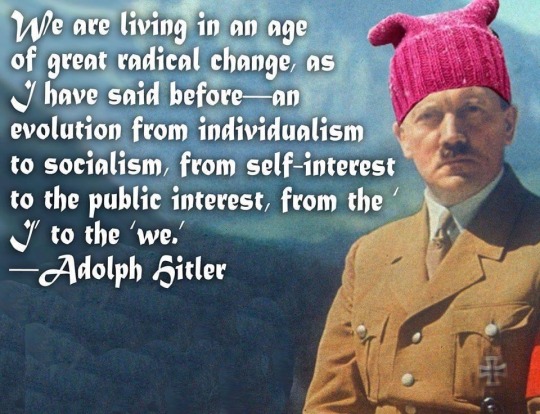
Socialists
“Our people have high aims... What we want to do is build a new state. And that is why others hate us so. They have said it often enough. They say, "But your social experiments are very dangerous. If that kind of thing begins to spread, and if our workers see it, it will be bad. It costs billions and earns nothing. There is no profit and no dividend to be gotten out of it. What good is it? We are not interested in such a development. We welcome everything that helps the materialistic progress of humanity —provided that such progress nets a profit. But social experiments— all the things you are doing—can only serve to awaken the of the masses and to pull us off our pedestal. You can hardly expect that of us."
We have been looked upon as the bad example; whatever we tried was no good because it was meant for the people. We have taken the road toward true social legislation and toward a sociological development [equality] which is hated in other countries. For they are plutocracies in which a very small clique of capitalists rules the masses and, naturally, cooperates closely with the international Jews and the Freemasons. We have known these enemies from the days of our internal struggle; it is the dear old coalition of the Weimar system.
They hate us on account of our social principles, and everything that we plan and carry out in that direction looks dangerous to them. They are convinced that this development must be destroyed. But I am convinced that the future belongs to this development, and that those states which do not follow it will sooner or later collapse. Unless they find a solution dictated by reason, the states which have social problems remaining unsolved will sooner or later end in chaos. Socialism has prevented chaos in Germany.
You know our aims, and you know that we defend them persistently and with fixity of purpose—and that we shall achieve them. That is why all these international plutocracies, the Jewish newspapers, the stock exchanges of the world, hate us; that is why all the countries whose attitude is identical or similar are in sympathy with those democracies. It is precisely because we know that the fight is a struggle for the entire social foundation of our nation and is directed against the very substance of our life that, while we are fighting for these ideals, we must profess them again and again.
Adolph Hitler, September 4, 1940. "Hitler's Words"
1 note
·
View note
Text

fixity
/ fik · si · tee /
(n.) the state of being unchanging or permanent
0 notes
Text
1. I Shall set for Vajrasuchi (the diamond needle) which pierces ignorance, rebukes the ignorant, and ornaments those who have wisdom as eye. The Smritis affirm, following the Vedas, that the Brahmana is the most important of the four varnas. It must be asked, ‘Who is a Brahmana’ – the self, body, class, knowledge, action, or virtue? The soul is not a Brahmana because the soul is the same in all bodies past and future. The same person takes many bodies according to karma, nor is the body Brahmana – the body is the same from the Chandala to the highest varna, being made of the five elements, and is seen to have old age, death, etc., alike. There is no fixity of colour such as, Brahmana is white, Kshatriya is red, Vaishya is yellow, and Sudra is black; (if it were so) when the father’s body is cremated, the son etc., would be guilty of killing a Brahmana.
2. Nor is the class a Brahmana. Then there would be many classes within the classes. Many are the great sages: Rishyasringa born of a deer, Kausika of reed, Jambuka of a jackal, Valmiki of an ant-hill, Vyasa of a fisher-girl, Gautama of a hare’s back, Vasistha of Urvasi, Agastya of a pot according to tradition. These are not Brahmanas by birth but by their knowledge. Nor is knowledge Brahmana: Kshatriyas and others also have knowledge. Nor is karma: all creatures are seen to have similar karma of Prarabdha etc., and all creatures act being impelled by karma. Nor is a man of virtue: There are many givers of gold – Kshatriyas etc.
3. One who has directly realized, like the berry in the palm, the Atman without a second, devoid of class, quality and action and of defects like the six waves (like hunger), the states (like birth and death), of the nature of truth, knowledge and bliss, free from adjuncts, the basis of all thoughts, immanent in all creatures, present inside and outside like space. Bliss impartite, beyond (ordinary) knowledge, to be realized by experience alone – and having become successful, free from lust etc., rich in mental control, without greed etc., mind untouched by hypocrisy etc. This is the intention of Veda, etc. Otherwise the nature of Brahmana cannot be achieved. One should contemplate one’s self as the spirit without a second, truth, knowledge, and bliss.
(Vajrasuchika Upanishad)
0 notes
Text
"The Attractive Ape." Introduction to the Vajrasuchika Upanishad. The Exploration of the Mysteries of the Diamond Pointed Needle.

The Vajrasuchi Upanishad (Sanskrit: वज्रसूची उपनिषत्, IAST: Vajrasūcī Upaniṣad) is an important Sanskrit text and an Upanishad of Hinduism. It is classified as one of the Samanya (general) Upanishads, and identified as a Vedanta text.[3][2] It is attached to the Samaveda.[3]
The text discusses the four varnas also called 'caste'. It is notable for being a systematic philosophical work against the division of human beings, and for asserting that any human being can achieve the highest spiritual state of existence.
The date as well as the author of Vajrasūchi Upanishad is unclear. The Upanishad is attributed to Sankaracharya in the manuscripts discovered by early 1800s.[1][5] Sankaracharya, also known as Adi Shankara, was an Advaita Vedanta scholar, but given the Indian tradition of dedicating and attributing texts to revered historical scholars, there is uncertainty whether texts attributed to Adi Shankara were actually composed by him or in the 8th-century he likely lived in.
It is numbered 76 of 108.
The Vajrasuchi Upanishad (Sanskrit: वज्रसूची उपनिषत्, IAST: Vajrasūcī Upaniṣad) is an important Sanskrit text and an Upanishad of Hinduism. It is classified as one of the Samanya (general) Upanishads, and identified as a Vedanta text.[3][2] It is attached to the Samaveda.[3]
The text discusses the four varnas also called 'caste'. It is notable for being a systematic philosophical work against the division of human beings, and for asserting that any human being can achieve the highest spiritual state of existence.
The date as well as the author of Vajrasūchi Upanishad is unclear. The Upanishad is attributed to Sankaracharya in the manuscripts discovered by early 1800s.[1][5] Sankaracharya, also known as Adi Shankara, was an Advaita Vedanta scholar, but given the Indian tradition of dedicating and attributing texts to revered historical scholars, there is uncertainty whether texts attributed to Adi Shankara were actually composed by him or in the 8th-century he likely lived in.
It is numbered 76 of 108.
I Shall set for Vajrasuchi (the diamond needle) which pierces ignorance, rebukes the ignorant and ornaments those who have wisdom as eye.
The Smritis affirm, following the Vedas that the Brahmana (seeker of wisdom) is the most important of the four castes. It must be asked, ‘Who is a Brahmana’ – the self, body, class, knowledge, action or virtue ?
The soul is not a Brahmana because the soul is the same in all bodies past and future. The same person takes many bodies according to karma, nor is the body Brahmana – the body is the same from the Chandala (to the highest caste) being made of the five elements and is seen to have old age, death etc., alike.
There is no fixity (of colour) such as Brahmana is white, Kshatriya (soldier) is red, Vaishya (merchant) is yellow and Sudra (servant) is black; also when the father’s body is cremated, the son etc., may be guilty of killing a Brahmana.
Nor is the class a Brahmana. Then there would be many classes within the classes. Many are the great sages: Rishyasringa (does not suffer wrong) born of a deer, Kausika (fragrant resin, virtuous, loving,) of reed, Jambuka of a jackal (a seedless grape, low born), Valmiki of an ant-hill, Vyasa (the severer) of a fisher-girl, Gautama (the first one, the Buddha) of a hare’s back, Vasistha of Urvasi (blood of thigh bone), Agastya (mover of mountains) of a pot according to tradition.
These are not Brahmanas by birth but by their knowledge. Nor is knowledge Brahmana: Kshatriyas and others also have knowledge. Nor is karma: all creatures are seen to have similar karma of Prarabdha (the enterprises of nature) etc., and all creatures act being impelled by karma. Nor is a man of virtue: There are many givers of gold – Kshatriyas etc.
Shankaracharya, said to be an incarnation of Shiva was one of history’s first civil rights pioneers. He was outspoken about ending the caste system, and here he says anyone can realize the Self. He essentially says reincarnation is nonsense. How a man lives and learns determines if his life can attain to the values of the Supreme Being and contribute to society.
This made him very unpopular, so he preached in the wilderness away from his critics. He is the greatest of all Hindu sages. He translated the Bhagavad Gita, is the author of Vivekachoodamani, Atma Bodha and commented on many of the Upanishads. He is said to be the author of the Great Hindu Renaissance. His writing is studied all over the world.
The above script states the mind changes colors as it changes its identity, but certainly that does not change the body or the composition of reality. Changing the mind so it tunes into reality is the goal. To project the willy nillies of the mind onto the body or the world is the antithesis of the discovery of the Self. It denies the role of God in the making of the creation. Nothing we say, think, do, read, write, or feel is ever as Great as all that God can do.
He who preaches from the pulpit on Sunday, “How great Thou Art!” is correct. All else falls short of attempting to explain the splendor of God and how we can be a part of His Plan. One must never use the Name of God or the scriptures to defame God or dim the awe we should all feel in regards to all that He does.
Shankara identifies five “castes” within us that contribute to the Glory of God. They are body, class, knowledge, action and virtue. These we inherit from our parent, the one who teaches us about the Self, the Holy Spirit that is the same in all of us but sheds His Light through our individual thoughts and behaviors.
This parent is called a Smriti by the Upanishads. A Smriti is “the whole body of sacred tradition that is remembered by humanity.” During his life, Shankara combatted a Smriti that suggested the taking of slaves, mistreatment of women, corruption in society were decent ways of life. It was believed persons could be born into a body that was especially blessed or cursed by God and the gods and there was no way to change it except to die and try again. Shankara refutes stating all creatures have an enterprise of their own and this is the “gold” each being mines by being a Khsatriya, a “soldier of the scriptures.”
This is also found in the mantra above, composed by stringing the strange Sanskrit words together, “He who refuses what is wrong, is like a reed of fragrant resin and virtuous tactics, severs what is low born from the ant hill of the mind, achieves manhood, becomes enlightened, and finds God.”
Otherwise, much as Judaism says, man is just an attractive ape with a penchant for nonsense, death, violence, and trouble.
0 notes